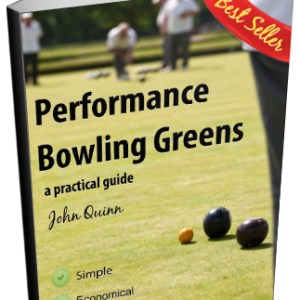A couple of years ago we were hit by severe snow and ice in some parts of the country and it raised a few questions about how best to deal with severe winter weather on bowling greens. I am re-visiting this today as a timely reminder now that we are in the winter season. Hopefully this will be a good omen and we wont get any snow this year!
The unusually early onset of winter in 2009 and 2010 created a few problems for most of us and seriously curtailed many winter maintenance programs.
We received a lot of enquiries asking for advice on dealing with the snow and ice on bowling greens and the aftermath of deep snow cover.
The main concern during and after snow cover is the potential for the outbreak of fungal diseases such as fusarium patch; and indeed, fusarium might well be encountered after the snow has melted. Although many clubs will have applied a preventative fungicide in the Autumn, this might not have provided total protection, but should have minimised the risk of attack.
When the snow has gone you might well find active areas of Fusarium and this should be treated with a curative fungicide containing the active ingredients iprodione or chlorothalonil applied as per the manufacturer’s advice.
Many of the enquiries we have received have been related to the actual snow cover and clubs have been worried about the prolonged cover of snow and ice on their turf and have asked if they should be pro-active and do something to remove the ice cover. My advice would be to leave it and allow it to melt naturally.
Attempting to remove ice could result in damage to the turf, soil structure and grass plants.
Please also remember that even after the snow and ice has gone the underlying soil could still be frozen and any activity on the green could result in damage to the root system of the green.
Please make sure that the green has completely thawed by probing the soil before commencing (and catching up) with your winter maintenance program.
Any questions, please don’t hesitate to contact me.




